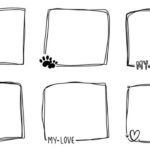I. Introduction to Molding and 3D Printing for Repair
II. Benefits of Using Molding and 3D Printing for Repairing Out-of-Production Items
III. Process of Molding and 3D Printing for Repair
IV. Considerations when Choosing Between Molding and 3D Printing for Repair
Introduction to Molding and 3D Printing for Repair
Hey there, DIY enthusiasts and repair wizards! Have you ever found yourself in a situation where a beloved item breaks, only to realize that it’s no longer in production? Fret not, because we’ve got some exciting solutions for you – molding and 3D printing for repair!
So, what exactly are molding and 3D printing, and how can they help you breathe new life into your treasured possessions? Let’s dive in and explore the wonderful world of these innovative techniques.
Molding involves creating a replica of an object by making a mold of the original piece and then casting a material, such as resin or silicone, into it. This process allows you to reproduce intricate details and textures, making it ideal for replicating out-of-production parts or components.
On the other hand, 3D printing is a cutting-edge technology that enables you to create three-dimensional objects layer by layer using a digital file. With 3D printing, you have the power to design and fabricate custom parts with precision and accuracy, making it perfect for crafting unique and personalized repairs.
Both molding and 3D printing offer versatile solutions for repairing items that are no longer readily available on the market. Whether you’re fixing a vintage lamp, restoring a classic car, or reviving an antique piece of furniture, these techniques can help you preserve the past and keep cherished belongings in top shape.
In the following sections, we’ll delve deeper into the benefits of using molding and 3D printing for repairing out-of-production items, walk you through the process of each technique, and provide valuable insights on choosing the right method for your repair project. So, buckle up and get ready to embark on a journey of creativity and innovation as we explore the fascinating world of molding and 3D printing for repair!
Benefits of Using Molding and 3D Printing for Repairing Out-of-Production Items
So, you’ve got this cherished item that’s seen better days, but alas, it’s out of production and replacement parts are nowhere to be found. What’s a conscientious owner to do? Fear not, my friend, for the wonders of molding and 3D printing are here to save the day!
Preserving the Past
One of the greatest benefits of using molding and 3D printing for repairing out-of-production items is the ability to preserve the integrity and authenticity of the original piece. Rather than resorting to makeshift fixes or settling for generic replacement parts, you can recreate the exact specifications of the item using these advanced techniques.
Cost-Effective Solutions
Let’s face it, buying a whole new item or commissioning a custom replacement part can cost a pretty penny. Molding and 3D printing offer a more budget-friendly alternative that allows you to keep your beloved item in top shape without breaking the bank. Plus, you can produce multiple copies of the same part for future repairs at a fraction of the cost.
Customization Options
When it comes to repairing out-of-production items, one size definitely does not fit all. With molding and 3D printing, you have the freedom to customize the replacement part to your exact specifications. Whether it’s matching a specific color, adjusting the size, or adding unique details, you have full control over the final product.
Quick Turnaround Time
Waiting weeks or even months for a replacement part to arrive can be frustrating, especially when you’re eager to get your item back in working order. Molding and 3D printing offer a fast and efficient solution, allowing you to create the part on-demand and significantly reducing the downtime for repairs.
Sustainability and Eco-Friendly Practices
In a world where environmental consciousness is more important than ever, using molding and 3D printing for repairs is a sustainable choice. By avoiding the need to discard and replace entire items, you can reduce waste and contribute to a more eco-friendly approach to maintaining your possessions.
So, the next time you’re faced with the dilemma of repairing an out-of-production item, remember the incredible benefits that molding and 3D printing can offer. Not only will you be able to preserve the past, save money, and customize to your heart’s content, but you’ll also be making a sustainable choice that benefits both you and the planet. Happy repairing!
Process of Molding and 3D Printing for Repair
So, you’ve decided to repair that beloved out-of-production item using either molding or 3D printing. Congratulations! Now, let’s dive into the fascinating process of how these innovative techniques can bring your cherished piece back to life.
1. Molding:
First up, let’s talk about molding. This technique involves creating a replica of your item by making a mold of it. Here’s how it works:
- Prepare the mold material: Depending on the item’s material, you’ll need to choose the appropriate mold material such as silicone or latex.
- Create the mold: Carefully pour the mold material over the item, making sure to capture all the details. Allow the mold to set and cure according to the manufacturer’s instructions.
- Remove the item: Once the mold is fully cured, carefully remove the original item from the mold, leaving a perfect negative impression behind.
- Pour the casting material: Now, it’s time to pour your chosen casting material into the mold to create a replica of the item. Allow the casting material to set and cure before carefully removing it from the mold.
- Finishing touches: Depending on the casting material used, you may need to sand, paint, or seal the replica to match the original item.
2. 3D Printing:
Next, let’s explore the exciting world of 3D printing. This cutting-edge technology uses a digital file to create a three-dimensional object layer by layer. Here’s how it’s done:
- Create or obtain a 3D model: Start by designing a 3D model of the item using CAD software or obtain a pre-existing model from online repositories.
- Choose the printing material: Select the appropriate printing material based on the item’s requirements, such as plastic, resin, or metal.
- Print the object: Load the 3D file into the printer and start the printing process. The printer will build up the object layer by layer, following the design of the 3D model.
- Post-processing: Once the printing is complete, remove the object from the printer and perform any necessary post-processing tasks such as cleaning, sanding, or painting to achieve the desired finish.
Whether you choose molding or 3D printing for your repair project, both techniques offer unique advantages in bringing back to life those cherished items that are no longer in production. Remember to consider factors such as material compatibility, intricacy of details, and desired finish when deciding between the two methods.
Now that you’re armed with the knowledge of how molding and 3D printing work, you’re ready to embark on your repair journey. So, roll up your sleeves, unleash your creativity, and breathe new life into your treasured possessions!
Considerations when Choosing Between Molding and 3D Printing for Repair
When it comes to repairing out-of-production items, choosing between molding and 3D printing can be a tough decision. Each method has its own unique benefits and drawbacks, so it’s important to carefully consider your specific needs before making a final decision.
1. Cost
One of the main considerations when choosing between molding and 3D printing for repair is cost. 3D printing can be more expensive upfront, as you need to invest in the printer and materials. On the other hand, molding can be a more cost-effective option for larger production runs, as the cost per unit tends to decrease with volume. Consider your budget and the scale of your project before deciding which method to use.
2. Time
Another important factor to consider is the time it takes to complete the repair. 3D printing can be a slower process, especially for larger items, as it builds up layer by layer. Molding, on the other hand, can be a quicker option for replicating multiple copies of the same item. If time is of the essence, molding may be the better choice for your repair project.
3. Quality
When it comes to quality, both molding and 3D printing can produce high-quality results. However, it’s important to consider the specific requirements of your repair project. 3D printing is great for intricate designs and complex shapes, while molding can be a better option for items that require a smooth finish or specific material properties. Consider the aesthetic and functional requirements of your repair project when choosing between molding and 3D printing.
4. Material
Another factor to consider is the material used for the repair. 3D printing offers a wide range of materials to choose from, including plastics, metals, and even ceramics. Molding, on the other hand, is typically limited to materials like silicone, resin, or rubber. Consider the properties of the material you need for your repair project, such as durability, flexibility, or heat resistance, before deciding which method to use.
5. Complexity
Finally, consider the complexity of the item you need to repair. 3D printing is great for creating complex geometric shapes and intricate designs, while molding is better suited for replicating simple shapes or duplicates of the same item. Think about the complexity of your repair project and choose the method that best suits your needs.
Ultimately, the choice between molding and 3D printing for repair will depend on your specific needs and constraints. By carefully considering factors such as cost, time, quality, material, and complexity, you can make an informed decision that will lead to a successful repair project. Whichever method you choose, remember to take your time, do thorough research, and seek advice from experts if needed. Happy repairing!
“`html
Considerations when Choosing Between Molding and 3D Printing for Repair
When it comes to repairing out-of-production items, choosing between molding and 3D printing can be a tough decision. Each method has its own unique benefits and drawbacks, so it’s important to carefully consider your specific needs before making a final decision.
1. Cost
One of the main considerations when choosing between molding and 3D printing for repair is cost. 3D printing can be more expensive upfront, as you need to invest in the printer and materials. On the other hand, molding can be a more cost-effective option for larger production runs, as the cost per unit tends to decrease with volume. Consider your budget and the scale of your project before deciding which method to use.
2. Time
Another important factor to consider is the time it takes to complete the repair. 3D printing can be a slower process, especially for larger items, as it builds up layer by layer. Molding, on the other hand, can be a quicker option for replicating multiple copies of the same item. If time is of the essence, molding may be the better choice for your repair project.
3. Quality
When it comes to quality, both molding and 3D printing can produce high-quality results. However, it’s important to consider the specific requirements of your repair project. 3D printing is great for intricate designs and complex shapes, while molding can be a better option for items that require a smooth finish or specific material properties. Consider the aesthetic and functional requirements of your repair project when choosing between molding and 3D printing.
4. Material
Another factor to consider is the material used for the repair. 3D printing offers a wide range of materials to choose from, including plastics, metals, and even ceramics. Molding, on the other hand, is typically limited to materials like silicone, resin, or rubber. Consider the properties of the material you need for your repair project, such as durability, flexibility, or heat resistance, before deciding which method to use.
5. Complexity
Finally, consider the complexity of the item you need to repair. 3D printing is great for creating complex geometric shapes and intricate designs, while molding is better suited for replicating simple shapes or duplicates of the same item. Think about the complexity of your repair project and choose the method that best suits your needs.
Ultimately, the choice between molding and 3D printing for repair will depend on your specific needs and constraints. By carefully considering factors such as cost, time, quality, material, and complexity, you can make an informed decision that will lead to a successful repair project. Whichever method you choose, remember to take your time, do thorough research, and seek advice from experts if needed. Happy repairing!
“`










Comments